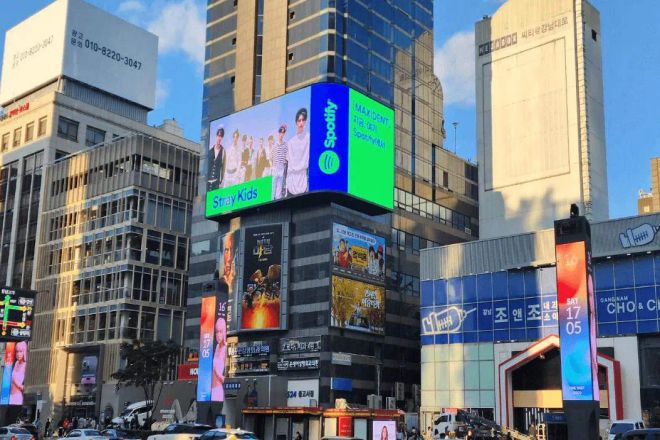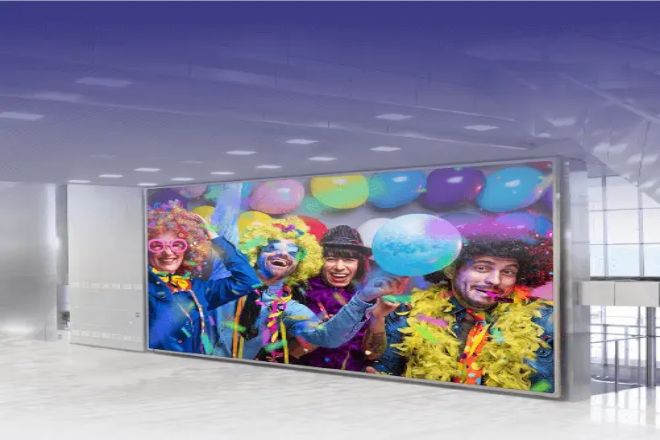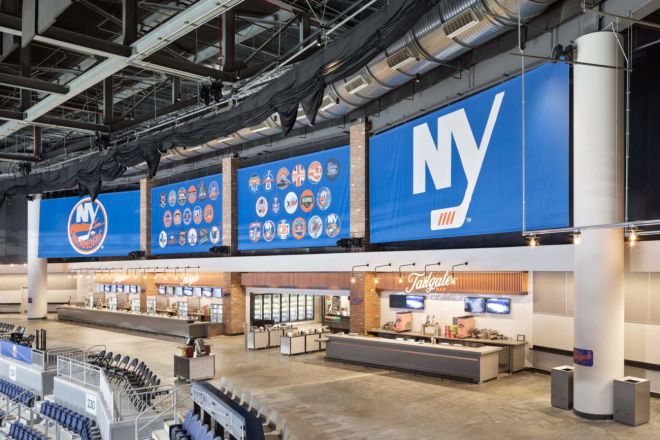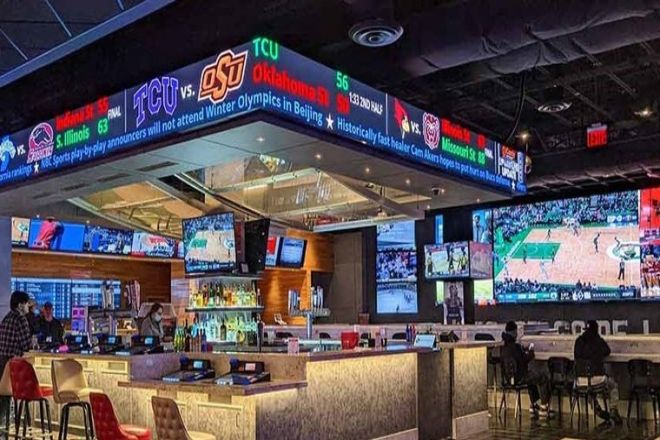مقدمة

ومع التطور السريع للعلوم والتكنولوجيا، يعرض الصمام لقد تغلغلت تدريجيا في كل جانب من جوانب حياتنا.
من لوحات الإعلانات النيون في المدن إلى الشاشات الكبيرة الداخلية إلى الأجهزة الإلكترونية للاستخدام الشخصي، تُستخدم شاشات LED في كل مكان. توفر لنا طريقة التصوير الفريدة وتأثير العرض تجربة بصرية غير مسبوقة. ومع ذلك، بالنسبة للعديد من الأشخاص، تظل مبادئ التصوير وراء شاشات LED مجالًا غامضًا ومثيرًا للاهتمام.
إن فهم مبادئ التصوير لشاشات LED لا يساعدنا فقط في استخدام هذه الأجهزة وصيانتها بشكل أفضل، بل يمنحنا أيضًا فهمًا أعمق لجوهر تقنية العرض الحديثة.
1. المعرفة الأساسية لشاشة LED
شاشة LED هي جهاز عرض إلكتروني يستخدم الثنائيات الباعثة للضوء (LED) كعناصر عرض. يعتمد مبدأ الإضاءة في شاشة LED على تأثير الإضاءة الكهربائية لـ LED (الصمام الثنائي الباعث للضوء).
على وجه التحديد، الصمام الثنائي الباعث للضوء هو عبارة عن صمام ثنائي مصنوع من مادة شبه موصلة. عندما يمر التيار الكهربائي من خلاله، تتحد الإلكترونات والفجوات عند الوصلة PN وتطلق الطاقة. يتم إصدار هذه الطاقة في شكل فوتونات، وبالتالي تحقيق تحويل الطاقة الكهربائية إلى طاقة ضوئية.
تتكون شاشة العرض LED من العديد من مصابيح LED. كل LED عبارة عن جهاز أشباه موصلات ويتميز بإصدار الضوء عند مواجهة جهد أمامي. يتم تنظيم هذه المصابيح في مصفوفة أو صف، ولكل LED دائرة تحكم مستقلة يمكنها التحكم في سطوع ولون LED من خلال التحكم في حالة تبديل الدائرة.
عندما تكون هناك حاجة لعرض صورة أو نص، يقوم الكمبيوتر بتحويل الصورة أو النص إلى إشارة رقمية وإرسالها إلى دائرة التحكم في شاشة LED. تقوم دائرة التحكم بتحويل الإشارة الرقمية إلى إشارة تحكم لعرض الصور أو النص من خلال التحكم في سطوع ولون LED.
تتميز شاشات LED بالسطوع العالي، وانخفاض استهلاك الطاقة، والعمر الطويل، والموثوقية العالية، وسهولة الصيانة، لذلك يتم استخدامها على نطاق واسع في مناسبات مختلفة، مثل اللوحات الإعلانية الخارجية، والملاعب، وقاعات المؤتمرات، وما إلى ذلك.
2. مبدأ تصوير شاشة LED

- مبدأ التصوير بمصفوفة النقاط
تتكون شاشة العرض LED من العديد من مصابيح LED الصغيرة. يتم ترتيب مصابيح LED هذه في نقاط وفقًا لقواعد معينة، تمامًا مثل مصفوفة النقاط التي نراها عادةً. تصدر كل نقطة ضوءًا وتمثل بكسلًا على الشاشة. عندما تتغير هذه النقاط بترتيب وسطوع معينين، يمكننا رؤية صور ونصوص مختلفة.
تحدد كثافة مصفوفة النقاط وضوح العرض. إذا كانت مصفوفة النقاط كثيفة ومساحة البكسل صغيرة، يمكن للشاشة عرض صورة أكثر تفصيلاً ووضوحًا. على العكس من ذلك، إذا كانت مصفوفة النقاط متفرقة ومساحة البكسل كبيرة، فسيكون تأثير العرض خشنًا نسبيًا.
- محرك البكسل والتحكم
تخيل أن كل مصباح LED يشبه مصباحًا صغيرًا يتطلب مفتاحًا للتحكم في ما إذا كان ينبعث منه ضوء أم لا. في شاشة LED، يكون هذا المفتاح هو دائرة محرك البكسل. عندما يتم نقل إشارات التحكم وإشارات البيانات إلى شاشة العرض من خلال واجهات وبروتوكولات محددة، ستتحكم دائرة محرك البكسل في تشغيل وإيقاف تشغيل مصابيح LED وتغييرات اللون بناءً على هذه الإشارات.
يمكن فهم مقياس اللون الرمادي على أنه مستوى سطوع أضواء LED. إذا كان مستوى اللون الرمادي مرتفعًا، فسوف يتغير سطوع ضوء LED في نطاق كبير، ويمكن عرض صورة أكثر تفصيلاً. يشير عمق اللون إلى عدد الألوان التي يمكن لشاشة LED عرضها. كلما زاد عمق اللون، زادت ثراء ألوان الشاشة.
- تركيب الألوان وعرضها
نحن نعلم أنه يمكن خلط الأحمر والأخضر والأزرق لإنتاج ألوان مختلفة. هذا هو مبدأ الألوان الأساسية الثلاثة لـ RGB. في شاشة العرض LED، تحتوي كل بكسل على مصابيح LED بثلاثة ألوان: الأحمر والأخضر والأزرق. من خلال ضبط سطوع وتغيرات لون هذه المصابيح الثلاثة LED، يمكننا تجميع ألوان مختلفة لعرض صور ملونة.
من أجل جعل ألوان الشاشة أكثر دقة وتجانسًا، نحتاج أيضًا إلى إجراء تصحيح الألوان وتعديلها. تمامًا كما هو الحال عند التقاط صورة، نحتاج أحيانًا إلى تلوين الصورة لجعلها تبدو أكثر واقعية وطبيعية. من خلال تصحيح الألوان وتعديلها، يمكن لشاشات LED تقديم تأثيرات صور أكثر واقعية وطبيعية.
3. تطوير تقنية تصوير شاشات LED
- تطور تكنولوجيا المسح الضوئي
تشكل تقنية المسح الضوئي لشاشات LED جزءًا مهمًا من تقنية التصوير الخاصة بها، والتي تحدد معدل التحديث وتأثير العرض للشاشة.
مع التقدم المستمر للتكنولوجيا، شهدت تقنية المسح أيضًا تحولًا من المسح الثابت إلى المسح الديناميكي.
تعد تقنية المسح الثابت أقدم طريقة مسح تم تطبيقها على شاشات LED. وبهذه الطريقة، تحتوي كل بكسل LED على دائرة قيادة مستقلة، والتي يمكنها التحكم بشكل مستقل في حالة التشغيل والإيقاف.
ومع ذلك، مع زيادة حجم الشاشة وكثافة البكسل، تواجه تقنية المسح الضوئي الثابتة مشاكل مثل ارتفاع استهلاك الطاقة، والتكلفة العالية، وضعف الاستقرار.
من أجل حل هذه المشكلات، ظهرت تقنية المسح الديناميكي. تستخدم تقنية المسح الديناميكي تقنية تقسيم الوقت المتعدد لمشاركة دائرة القيادة مع العديد من وحدات بكسل LED، وبالتالي تقليل استهلاك الطاقة والتكلفة.
في الوقت نفسه، من خلال تحسين خوارزمية المسح وتحسين أداء دائرة القيادة، يمكن لتقنية المسح الديناميكي أيضًا تحقيق معدلات تحديث أعلى وتأخيرات أقل، مما يجعل تأثير عرض شاشة LED أكثر سلاسة وواقعية.
في السنوات الأخيرة، مع التطور المستمر للتكنولوجيا، تم أيضًا استخدام تقنية معدل التحديث العالي وزمن الوصول المنخفض على نطاق واسع في شاشات LED. يعني معدل التحديث العالي أن الشاشة يمكنها تحديث الصورة في فترة زمنية أقصر، مما يؤدي إلى تأثيرات ديناميكية أكثر سلاسة. يمكن لتقنية زمن الوصول المنخفض تقليل التأخير الزمني بين إدخال الإشارة وعرض الصورة، مما يحسن تجربة المشاهدة للمستخدم.
- تقنية العرض عالية الكثافة
مع تزايد متطلبات الناس لتأثيرات العرض، أصبحت تقنية العرض عالية الكثافة واحدة من الاتجاهات المهمة لتطوير شاشات LED. تتضمن تقنية العرض عالية الكثافة بشكل أساسي تقنية LED ذات الملعب الصغير، وتقنية micro LED (Micro-LED)، وتقنية Mini LED.
تشير تقنية LED ذات الحجم الصغير إلى زيادة كثافة البكسل في شاشة العرض عن طريق تقليل المسافة بين بكسلات LED. تتيح هذه الطريقة للشاشة تقديم المزيد من التفاصيل ووضوح أعلى ضمن مساحة محدودة. في الوقت الحاضر، تُستخدم تقنية LED ذات الحجم الصغير على نطاق واسع في العديد من مناسبات العرض الراقية، مثل دور السينما والمتاحف.
ظهرت تقنيات Micro LED وMini LED كتقنيات عرض عالية الكثافة في السنوات الأخيرة. تستخدم تقنية Micro LED شرائح LED صغيرة للغاية كوحدات عرض، والتي يمكنها تحقيق كثافة بكسل ودقة عالية للغاية. تعد تقنية Mini LED بمثابة رابط بين LED التقليدي وmicro LED.
تستخدم رقائق LED الأصغر حجمًا كمصدر للإضاءة الخلفية لتحقيق تباين أعلى وأداء أعمق للون الأسود من خلال تقنية التعتيم المحلي. تتمتع كلتا التقنيتين بتأثيرات عرض عالية للغاية وآفاق تطبيق واسعة.
- العرض الذكي والتحكم
مع التطور المستمر للتكنولوجيا الذكية، تتطور شاشات العرض LED تدريجيًا في اتجاه ذكي. تتضمن تقنية العرض والتحكم الذكية بشكل أساسي المراقبة عن بعد وتكييف المحتوى وتقنية التعديل الذكي لأنظمة التحكم.
يتيح نظام المراقبة والتحكم عن بعد للمستخدمين مراقبة حالة تشغيل شاشة LED والتحكم فيها عن بعد من خلال الشبكة. يمكن لهذه التقنية الحصول على السطوع ودرجة الحرارة والرطوبة والمعلمات الأخرى لشاشة العرض في الوقت الفعلي وضبطها وتحسينها حسب الحاجة.
في الوقت نفسه، يمكن لنظام المراقبة والتحكم عن بعد أيضًا تنفيذ وظائف تحذير الأخطاء والإصلاح التلقائي لتحسين استقرار وموثوقية الشاشة.
تعمل تقنية التكيف مع المحتوى والتعديل الذكي على ضبط تأثير العرض تلقائيًا وفقًا لسيناريو الاستخدام ومحتوى العرض.
على سبيل المثال، في صالة السينما، يمكن تعديل معلمات مثل السطوع والتباين ولون الشاشة تلقائيًا وفقًا لنوع الفيلم الذي يتم تشغيله؛ في غرفة المؤتمرات، يمكن تعديل معلمات مثل السطوع وزاوية عرض الشاشة تلقائيًا وفقًا لعدد المشاركين وموقعهم.
تستطيع هذه التقنية جعل شاشات LED أكثر ذكاءً وإنسانية، مما يحسن تجربة المشاهدة للمستخدمين.
4. معايير التقييم لجودة صور شاشات LED

تُعد جودة الصورة لشاشة LED أحد المؤشرات المهمة لقياس أدائها. فيما يلي بعض معايير التقييم المستخدمة بشكل شائع:
1) يشير توحيد السطوع إلى ما إذا كان سطوع كل منطقة ثابتًا عندما تعرض شاشة العرض LED صورة. ستكون الشاشة ذات توحيد السطوع الجيد أكثر راحة بصريًا، ولن يكون هناك اختلاف واضح في السطوع.
2) إعادة إنتاج الألوان: يشير إعادة إنتاج الألوان إلى ما إذا كانت شاشة العرض LED قادرة على استعادة لون الصورة الأصلية بدقة عند عرض الصورة. يمكن للشاشة ذات إعادة إنتاج الألوان الجيدة تقديم تأثير صورة أكثر واقعية وطبيعية.
3) التباين وزاوية المشاهدة: يشير التباين إلى الفرق في السطوع بين المناطق الأكثر سطوعًا والأكثر قتامة على شاشة العرض. وكلما زاد التباين، زادت قوة طبقات الصورة.
تشير زاوية العرض إلى نطاق الزوايا التي يمكن للمستخدمين من خلالها رؤية الصور بوضوح عند عرض الشاشة من زوايا مختلفة. يمكن للشاشة ذات التباين العالي وزوايا العرض الواسعة أن توفر تجربة مشاهدة أفضل.
5. كيف نقوم بتحسين جودة التصوير؟
من أجل تحسين جودة التصوير لشاشات العرض LED، يمكن استخدام طرق التحسين التالية:
1) اختيار وتخطيط حبات مصباح LED: حبات مصباح LED هي الوحدة الأساسية لشاشة العرض، وجودتها وتخطيطها يؤثران بشكل مباشر على جودة الصورة لشاشة العرض.
لذلك، عند اختيار حبات مصباح LED، يجب عليك اختيار المنتجات ذات السطوع العالي وتناسق الألوان الجيد والعمر الطويل. في الوقت نفسه، أثناء التخطيط، يجب ترتيب المسافات وزوايا حبات المصباح بشكل معقول لضمان اتساق السطوع وتناسق الألوان للشاشة بأكملها.
2) تحسين دوائر القيادة والتحكم: دائرة القيادة والتحكم هي الجزء الأساسي لشاشة LED، ويؤثر أداؤها بشكل مباشر على تأثير العرض للشاشة.
لذلك، يجب تحسين دائرة القيادة والتحكم وتصميمها لتحسين استقرار وموثوقية الدائرة وتقليل تشوه الصورة والوميض والمشكلات الأخرى الناجمة عن مشاكل الدائرة.
3) إزالة تداخل الضوء المحيط: يعد تداخل الضوء المحيط أحد العوامل المهمة التي تؤثر على جودة الصورة لشاشات العرض LED. ومن أجل تقليل تأثير الضوء المحيط على شاشة العرض، يمكن استخدام تدابير مثل أغطية الضوء والمستقطبات لإزالة تداخل الضوء المحيط.
وفي الوقت نفسه، يمكنك أيضًا ضبط معلمات مثل سطوع الشاشة وتباينها للتكيف مع ظروف الإضاءة المحيطة المختلفة.
من خلال طرق التحسين المذكورة أعلاه، يمكن تحسين جودة التصوير لشاشة LED بشكل فعال، مما يوفر تأثير صورة أكثر وضوحًا وواقعية وطبيعية.
6. مجالات تطبيق شاشات العرض LED وآفاقها

1) تطبيق واسع لشاشة العرض LED
تتمتع شاشات العرض LED بمجموعة واسعة من التطبيقات، وتغطي كل الصناعات تقريبًا. وفيما يلي بعض مجالات التطبيق الرئيسية:
- الدعاية والإعلان التجاري:
تُعد شاشة العرض LED ناقلًا مهمًا للإعلان التجاري ويمكن استخدامها لعرض معلومات إعلانية مختلفة، مثل صورة العلامة التجارية، وتقديم المنتج، والأنشطة الترويجية، وما إلى ذلك.
في الأماكن العامة مثل مراكز التسوق والشوارع التجارية والمطارات ومحطات القطارات، أصبحت شاشات LED أداة مهمة لجذب انتباه العملاء وتعزيز صورة العلامة التجارية.
- البث المباشر للفعاليات والعروض الثقافية والرياضية:
في الملاعب ومواقع الحفلات الموسيقية واستوديوهات التلفزيون وغيرها من الأماكن، تُستخدم شاشات LED على نطاق واسع لصور البث المباشر وصور الخلفية وعروض المؤثرات الخاصة وما إلى ذلك. من خلال شاشة LED، يمكن للجمهور رؤية تفاصيل اللعبة والأداء بشكل أكثر وضوحًا، مما يزيد من تجربة المشاهدة.
- بيان إعلامي وتعليمات مرورية:
في مجال النقل، يتم استخدام شاشات LED لعرض تعليمات المرور ومعلومات حالة الطريق ومعلومات التحول وما إلى ذلك، لتوفير خدمات المعلومات الدقيقة في الوقت الفعلي للسائقين والمشاة.
بالإضافة إلى ذلك، يمكن أيضًا استخدام شاشات LED لنشر المعلومات العامة، مثل الإعلانات الحكومية وإشعارات المجتمع.
- الواقع الافتراضي والواقع المعزز:
مع تطور تقنية الواقع الافتراضي والواقع المعزز، زاد تطبيق شاشات العرض LED في مجالات الواقع الافتراضي والمعزز تدريجيًا. ومن خلال تقنيات مثل شاشات العرض LED القابلة للتوصيل، يمكن تحقيق مشاهد افتراضية أكثر واقعية وتجربة مستخدم أكثر سلاسة.
2) اتجاهات تطوير تكنولوجيا شاشات LED
- دقة أعلى وحجم أكبر:
مع تقدم التكنولوجيا، ستصبح دقة شاشات LED أعلى وأعلى، وسيصبح الحجم أيضًا أكبر وأكبر. سيمكن هذا الشاشة من تقديم تأثيرات صور أكثر دقة ووضوحًا لتلبية احتياجات العرض المختلفة المتطورة.
وفي الوقت نفسه، يمكن أيضًا استخدام شاشات LED كبيرة الحجم لإنشاء تأثيرات بصرية أكثر إثارة للصدمة، مثل اللوحات الإعلانية الخارجية، وجدران ستائر المباني، وما إلى ذلك.
- البحث والتطوير لشاشة LED المرنة:
شاشة LED المرنة هي شاشة ذات خصائص ناعمة يمكن ثنيها أو طيها أو حتى لفها. يمكن لهذا النوع من الشاشات التكيف مع بيئات التثبيت المعقدة المختلفة، مثل الجدران المنحنية والأعمدة المنحنية وما إلى ذلك. سيجلب البحث والتطوير لشاشات LED المرنة مساحة توسع جديدة لمجالات تطبيق شاشات LED.
- حماية البيئة الخضراء وتوفير الطاقة وتقليل الاستهلاك:
مع تحسن الوعي البيئي والنقص المتزايد في موارد الطاقة، ستواجه شاشات LED أيضًا متطلبات أعلى من حيث توفير الطاقة وتقليل الاستهلاك وحماية البيئة الخضراء.
في المستقبل، ستستخدم شاشات LED المزيد من مصابيح LED الموفرة للطاقة ودوائر القيادة وتقنيات التحكم لتقليل استهلاك الطاقة وانبعاثات الكربون. وفي الوقت نفسه، سيتم استخدام المزيد من المواد وعمليات التصنيع الصديقة للبيئة لتقليل التأثير على البيئة.
خاتمة
في رحلة استكشاف مبادئ التصوير لشاشات LED، لدينا فهم متعمق للخصائص الأساسية لشاشات LED، وتكنولوجيا التصوير للشاشات، وأحدث اتجاهات التطوير في هذا المجال.
تعمل شاشات LED على تغيير تجربتنا البصرية وأسلوب حياتنا تدريجيًا بفضل تأثيرات العرض الممتازة ومجموعة واسعة من التطبيقات والابتكار التكنولوجي المستمر.
أخيرًا، إذا كنت تريد معرفة المزيد عن شاشات LED، يرجى الحصول على اتصال معنا.
